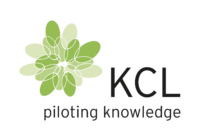In the ever-evolving world of paper products, achieving the perfect balance of stiffness and strength is crucial. Whether it’s for packaging, printing, or specialty applications, the demand for durable and robust paper is higher than ever. But what exactly is the secret to creating stiffer and stronger paper products? Let’s delve into the key factors that contribute to this essential quality.
Innovative Materials for Stronger Paper Products
One of the most significant advancements in the paper industry is the use of innovative materials. At KCL, we have extensive experience in nanocellulose materials, particularly Microfibrillated Cellulose (MFC). Our MFC is derived from industrial agro sidestreams, specifically sugar beet pulp, which is a by-product of the sugar industry. This material undergoes a purely mechanical process to remove lignin and hemicellulose, resulting in a highly fibrillated cellulose that is similar to wood-based analogues.
The use of MFC in paper products can significantly enhance their strength and stiffness. This is because the microfibrils create a dense network within the paper matrix, providing additional support and rigidity. Moreover, the process of creating MFC is energy-efficient and has a low carbon footprint, making it an environmentally friendly option for strengthening paper.
In addition to MFC, other novel biomaterials are being explored to improve paper product durability. These materials not only enhance the physical properties of paper but also contribute to sustainability efforts by reducing the reliance on traditional wood-based fibres.
The Role of Machinery in Paper Product Strength
While innovative materials play a crucial role, the machinery used in the paper manufacturing process is equally important. Advanced machinery ensures that the paper fibres are evenly distributed and properly bonded, which is essential for achieving uniform strength and stiffness. High-quality machinery can also optimise the drying process, which is critical for maintaining the integrity of the paper structure.
Modern paper machines are equipped with sophisticated control systems that monitor and adjust various parameters in real-time. This level of precision allows manufacturers to produce paper products with consistent quality and performance. Additionally, the use of specialised equipment, such as calenders and coaters, can further enhance the surface properties and overall strength of the paper.
Investing in state-of-the-art machinery is a key factor in producing stiffer and stronger paper products. It not only improves the efficiency of the manufacturing process but also ensures that the final product meets the stringent requirements of various applications.
Chemical Treatments to Enhance Paper Stiffness
Chemical treatments are another effective method for enhancing the stiffness and strength of paper products. These treatments involve the application of various additives and coatings that improve the bonding between fibres and increase the paper’s resistance to deformation. Common additives include starch, latex, and other synthetic polymers, which can significantly enhance the mechanical properties of paper.
At KCL, we focus on using natural binders, such as our MFC, in coating formulations. This approach not only improves the strength and stiffness of the paper but also reduces the reliance on synthetic materials. By replacing synthetic latexes and other barrier materials with MFC, we can create paper products that are both durable and environmentally friendly.
Furthermore, chemical treatments can be tailored to meet specific requirements, such as water resistance, grease resistance, and printability. This versatility makes chemical treatments an invaluable tool in the quest for stronger and stiffer paper products.
Best Practices in Manufacturing Stiffer Paper Products
Achieving the desired stiffness and strength in paper products requires a combination of best practices in manufacturing. One of the most important practices is the careful selection of raw materials. Using high-quality fibres and innovative materials, such as KCL’s MFC, can significantly enhance the performance of the final product.
Another critical practice is optimising the refining process. Proper refining ensures that the fibres are adequately fibrillated and bonded, which is essential for achieving the desired strength and stiffness. Additionally, controlling the moisture content during the drying process is crucial for maintaining the integrity of the paper structure.
Finally, continuous monitoring and quality control are essential for producing consistent and high-quality paper products. By implementing rigorous testing and inspection protocols, manufacturers can ensure that their products meet the required standards and perform reliably in various applications.
In conclusion, the secret to creating stiffer and stronger paper products lies in a combination of innovative materials, advanced machinery, chemical treatments, and best manufacturing practices. At KCL, we are committed to leveraging our expertise and cutting-edge technologies to deliver paper solutions that meet the evolving needs of our customers. By focusing on these key factors, we can produce paper products that are not only durable and robust but also environmentally sustainable.
